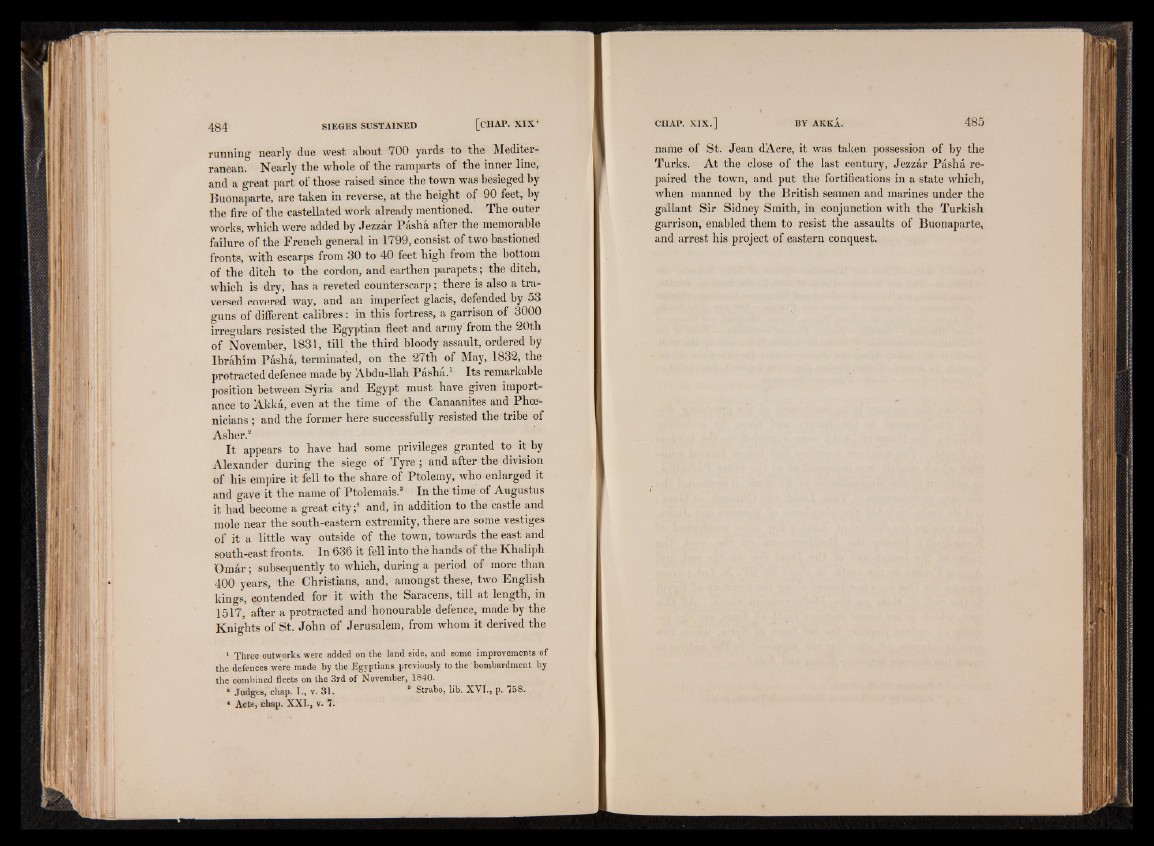
running n curl y dun west about TOO yards to the Mediter-
ranean. Nearly tbe wbole of tbe ramparts of tbe inner line,
and a great part of those raised since the town was besieged by
Buonaparte, are taken in reverse, at tbe height of 90 feet, by
the fire of the castellated work already mentioned. The outer
works, which were added by Jezzàr Pâshâ after the memorable
failure of the French general in 1799, consist of two bastioned
fronts, with escarps from 30 to 40 feet high from the bottom
of the ditch to the cordon, and earthen parapets ; the ditch,
which is dry, has a reveted counterscarp ; there is also a traversed
covered way, and an imperfect glacis, defended by 53
guns of different calibres : in this fortress, a garrison of 3000
irregulars resisted the Egyptian fleet and army from the 20th
of November, 1831, till the third bloody assault, ordered by
Ibrahim Pâshâ, terminated, on the 27th of May, 1832, the
protracted defence made by Abdu-llah Pasha.1 Its remarkable
position between Syria and Egypt must have given importance
to Akkâ, even at the time of the Canaanites and Phoenicians
; and the former here successfully resisted the tribe of
Asher.2
It appears to have had some privileges granted to it by
Alexander during the siege of Tyre ; and after the division
of his empire it fell to the share of Ptolemy, who enlarged it
and gave it the name of Ptolemais.3 In the time of Augustus
it had become a great city ;4 and, in addition to the castle and
mole near the south-eastern extremity, there are some vestiges
of it a little way outside of the town, towards the east and
south-east fronts. In 636 it fell into thé hands of the Khaliph
Omâr ; subsequently to which, during a period of more than
400 years, the Christians, and, amongst these, two English
kings, contended for it with the Saracens, till at length, in
1517, after a protracted and honourable defence, made by the
Knights of St. John of Jerusalem, from whom it derived the
1 Three outworks were added on the land side, and some improvements of
the defences were made by the Egyptians previously to the bombardment by
the combined fleets on the 3rd of November, 1840.
s Judges,'chap. 1., v. 31. 8 Strabo, lib. XVI., p. 158.
4 Acts, chap. XXI., v. 7.
name of St. Jean dAcre, it was taken possession of by the
Turks. At the close of the last century, Jezzâr Pâshâ repaired
the town, and put the fortifications in a state which,
when manned by the British seamen and marines under the
gallant Sir Sidney Smith, in conjunction with the Turkish
garrison, enabled them to resist the assaults of Buonaparte,
and arrest his project of eastern conquest.